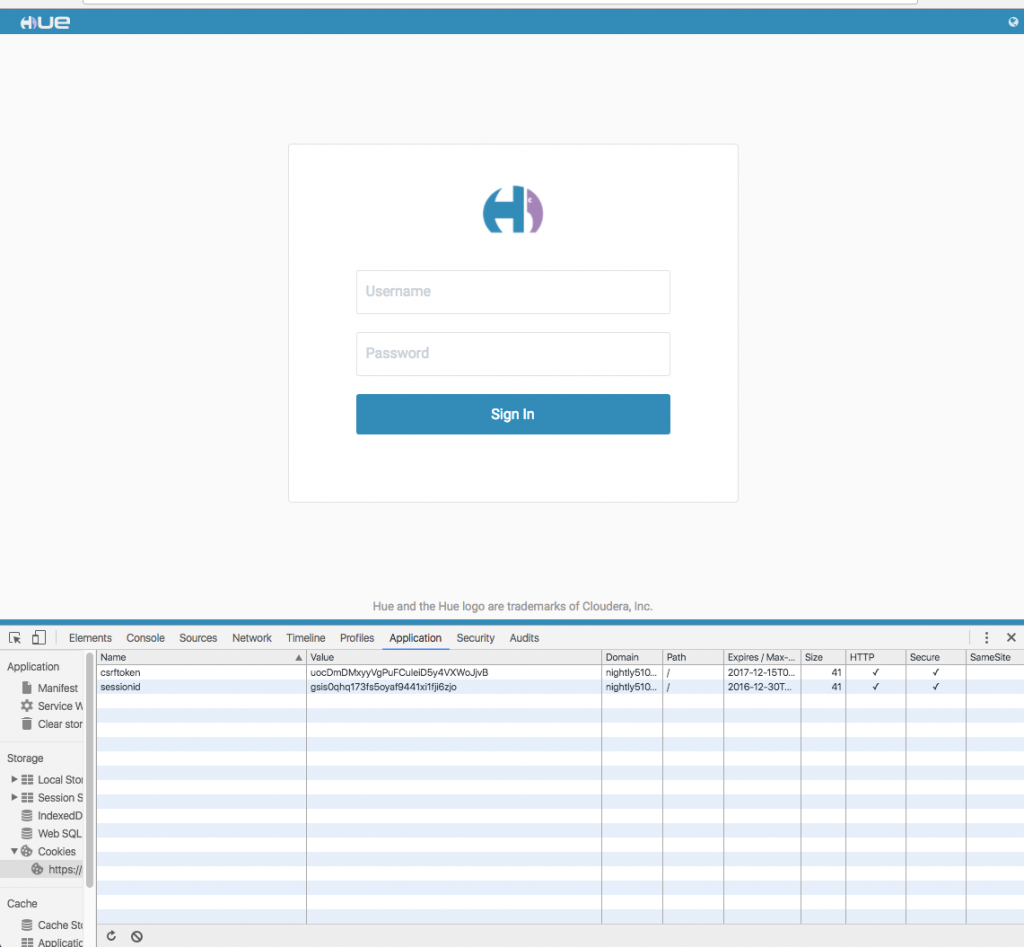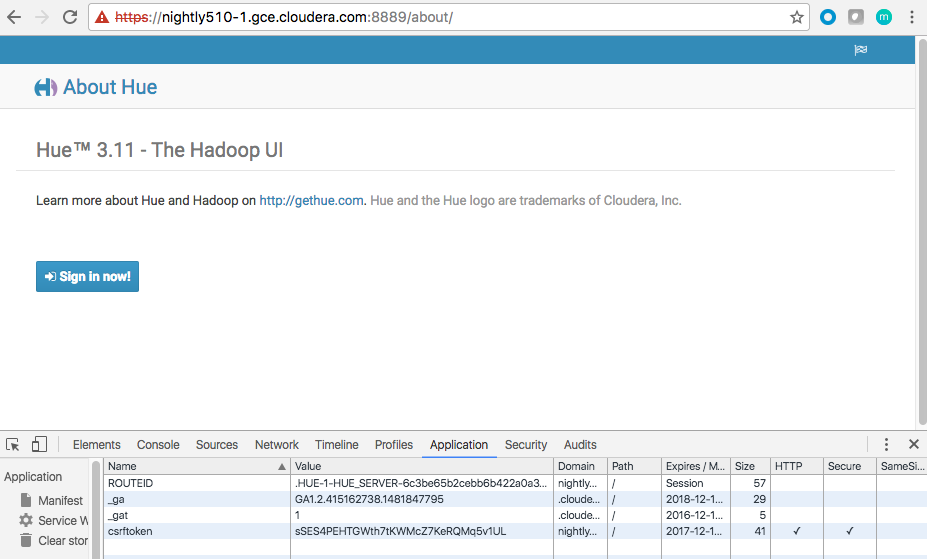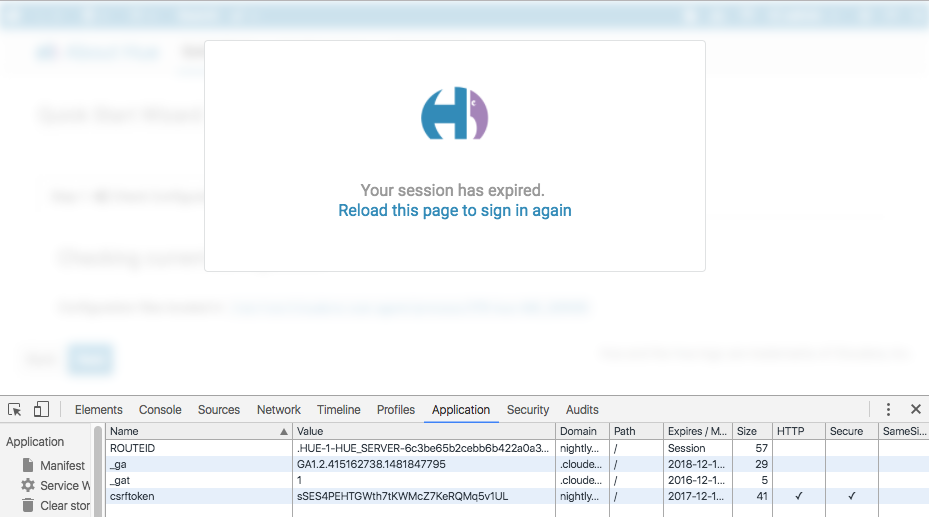Hello Hue admin,
Recently we have added many security options in Hue. This document describes some of the fixes and enables Hue administrators to enforce and manage secure Hue installation. Hue security improvements, part 1 is here:
Fixed sessionid and csrftoken with http only flag
If the HttpOnly flag is included in HTTP response header, then the cookie cannot be accessed through client side script and thus browser will not reveal the cookie to any third party. In order to help mitigate the risk of cross-site scripting, A cookie with this attribute is called an HTTP-only cookie. Any information contained in an HTTP-only cookie is less likely to be disclosed to a hacker or a malicious Web site.
One can see cookies with httponly and secure attributes set in above image.
If user intentionally deletes sessionid cookie and click on Hue page links then Hue will notify “Your session has expired. Reload this page to sign in again” forcing user to sign-in or refresh the page.
If user intentionally deletes sessionid cookie and click on Hue page links then Hue will notify “Your session has expired. Reload this page to sign in again” forcing user to sign-in or refresh the page.
Using GETTRASHROOT when trashing files
Hue now relies on GetTrashRoot under the cover when deleting HDFS files. It will send properly move the files to the correct trash location when using encrypted zones with KMS.
Fixed SASL Support in hive and hue hive.server2.thrift.sasl.qop="auth-conf”
SASL mechanisms support integrity and privacy protection of the communication channel after successful authentication. With integrity protection, subsequent requests and responses are protected against tampering. With privacy protection, subsequent requests and responses are encrypted and therefore protected against unintended monitoring. Privacy protection automatically entails integrity protection. These different types of protection are referred to as the quality of protection (qop). It is negotiated between the client and server during the authentication phase of the SASL exchange. If the client and server cannot negotiate a common qop, then the SASL authentication fails.
SASL QOP values are
- auth Authentication only
- auth-int Authentication with integrity protection
- auth-conf Authentication with integrity and privacy protection
In Thrift SASL library, the sasl_max_buffer support is already implemented. sasl_max_buffer in the hue.ini provides a bigger and configurable buffer size that allow to provide support for hive.server2.thrift.sasl.qop="auth-conf”.
[desktop]
\# This property specifies the maximum size of the receive buffer in bytes in thrift sasl communication (default 2 MB).
sasl_max_buffer=2 \* 1024 \* 1024
Fixed XML Injection for oozie
XML injection vulnerabilities arise when user input is inserted into a server-side XML document in an unsafe way. It may be possible to use XML metacharacters to modify the structure of the resulting XML. Depending on the function in which the XML is used, it may be possible to interfere with the Hue's logic, to perform unauthorized actions or access sensitive data.
Hue validate and sanitize user input in Oozie code before incorporating it into an XML document.
Fixed Turnoff HSTS header in Hue Load Balancer.
Turn off HSTS header in Hue Load Balancer and made sure Hue server is generating HSTS http header.
Introducing Request HTTP Pool in Hue.
The Request Session object allows to persist certain parameters across requests. It also persists cookies across all requests made from the Session instance, and will use urllib3's connection pooling. We are making several requests to the same host:port, with this change the underlying TCP connection will be reused, which can result in a significant performance increase. With current pool size set to 40 connections and is configurable using “CHERRYPY_SERVER_THREADS” parameter.
CACHE_SESSION = requests.Session()
CACHE_SESSION.mount('http://', requests.adapters.HTTPAdapter(pool_connections=conf.CHERRYPY_SERVER_THREADS.get(), pool_maxsize=conf.CHERRYPY_SERVER_THREADS.get()))
CACHE_SESSION.mount('https://', requests.adapters.HTTPAdapter(pool_connections=conf.CHERRYPY_SERVER_THREADS.get(), pool_maxsize=conf.CHERRYPY_SERVER_THREADS.get()))


